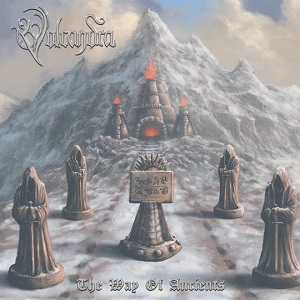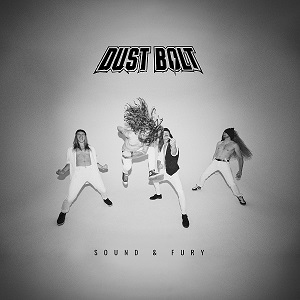PHILIP SAYCE – Licking Wounds Leads To Blues Rock Brilliance
April 9, 2015, 9 years ago
 “I’m grateful for the opportunity to be making music,” says Philip Sayce. This incredibly talented and sincere guitarist / vocalist began life in Wales. Grabbed lovingly by the diapers, he was whisked across the Atlantic to Canada. Currently residing in Los Angeles, Philip readily acknowledges the land of the Maple Leaf as his training ground. In his early teens, Sayce started playing jam nights at Grossman’s Tavern in Toronto, only to be recruited into Jeff Healey’s band in 1997. What followed was an eye-opening tenure with Uncle Kracker beginning in 2002, and an unbelievable run with Melissa Etheridge from 2004 to 2009. Philip has since issued six titles in Europe: Peace Machine, Innerrevolution, Ruby Electric, Silver Wheel Of Stars, Steamroller, and Influence. On the live front, he’s opened for rock legends ZZ Top and Deep Purple.
“I’m grateful for the opportunity to be making music,” says Philip Sayce. This incredibly talented and sincere guitarist / vocalist began life in Wales. Grabbed lovingly by the diapers, he was whisked across the Atlantic to Canada. Currently residing in Los Angeles, Philip readily acknowledges the land of the Maple Leaf as his training ground. In his early teens, Sayce started playing jam nights at Grossman’s Tavern in Toronto, only to be recruited into Jeff Healey’s band in 1997. What followed was an eye-opening tenure with Uncle Kracker beginning in 2002, and an unbelievable run with Melissa Etheridge from 2004 to 2009. Philip has since issued six titles in Europe: Peace Machine, Innerrevolution, Ruby Electric, Silver Wheel Of Stars, Steamroller, and Influence. On the live front, he’s opened for rock legends ZZ Top and Deep Purple. Canada finally caught on. Influence was first released overseas in August 2014, and it’s just become available in The Great White North. Forget about the better late than never adage, Philip admits, “It’s more just trying to be in the moment, trying to create music and build a road. When you’re busy and you’re deep in it, you’re just keeping your eye on the prize. With the music, I’m trying to do the best I can to have it reflect where I’m at as a person. It took someone at Warner Music Canada, this fine gentleman Steve Waxman, to really become the catalyst. He casually heard the music on Spotify, it just happened to be up there. He reached out, and we built a relationship from there. It was a beautiful way to connect; something I’m certainly excited and grateful for.”

Influence is an interesting album because it consists of six original songs and seven cover tunes; that almost even split is very rare. “I made this record in Nashville, for the most part, with my friend Dave Cobb. He and I have worked together for a number of years; we’ve made a couple of records together. We go back a ways; he’s a super-talented producer. So we just got started and it became ultimately a project where I was able to do some healing. I’d been through some rough times in the music business; it’s not the music friendship. I was licking my wounds a little bit, and Dave had been through some stuff as well. There’s a whole lot of that in the performances. It just became this record that we looked at as an opportunity to honour the musical influences that put me on the path I’m on. Sometimes that comes through interpreting somebody else’s work, and sometimes that comes through an original song. We had other songs we were looking at and working on… it wasn’t for one reason or another. It’s just an opportunity to give thanks to the artists in music that turned us on.”
The title, Influence, makes sense given that basically half the album is cover material. That being said, when listening to the original Philip Sayce songs, you immediately hear Eric Clapton, Jimi Hendrix, and Stevie Ray Vaughn. But Philip chose not to tackle songs from the aforementioned icons, opting for lesser known tracks instead. For example, Sayce puts his spin on a Little Richard tune – not “Tutti Frutti”, but rather “Green Power”. “Thanks for identifying that. Working closely with Dave, we were careful about the songs we wanted to pick. It was very much a collaborative process, cause we like a lot of the same music. It was the same way with Michael Nielsen, who produced two songs on the Canadian release – the Ten Years After classic, ‘I’d Love To Change The World’, and ‘On The Road Again’.”
Playing drums on “I’d Love To Change The World” is none other than Kenny Aronoff (John Mellencamp, Rod Stewart, Chickenfoot). “He’s a good friend and someone I’ve done a lot of recording with. We work together a lot – on the road and in the studio. He’s someone that I have the utmost respect for, and someone I’ve learned a lot from by just watching his drive and commitment to keep getting better. He’s always pushing himself. Much like the best athletes, he’s the first guy to the arena… and the last guy to leave. I really admire Kenny a lot.”
Song titles and lyrical themes pervade all musical genres and eras. Look no further for evidence of that as one of the original songs on Influence is called “Evil Woman”. Altogether different tunes with the same title have been crafted by: Black Sabbath, Electric Light Orchestra, Quiet Riot, and Slash Puppet. “It’s funny you say that cause we actually had that conversation in the studio. It was like, ‘there’s 50 songs called Evil Woman. Well yeah, now there’s 51.’ Why not? It’s a good title for a song. A lot of the time people get too precious about that – whatever – it’s the English language; we all use the same words. But that song was directly inspired… we were in Nashville recording, we’d been tracking all day, and all that week. We ended up going into the control room and listening to the first Black Sabbath record. Just kind of chilling, had a little food. We were listening to that and Audioslave. Then we went in the live room, just started playing, and that’s the song that became ‘Evil Woman’.”
Album opener, “Out Of My Mind”, is beyond fantastic; Philip shares how that gem came to be. “We recorded that song a bunch of different ways. It went back and forth, upside down, right side up – everything. There were different players on it, different arrangements… this was the one we settled on. I’m pretty sure that if we kept going, we’d probably still be working on it; constantly tinkering. We just kind of left it. There’s kind of a sister song to that on the record called ‘Easy On The Eyes’, which is sort of like a direct relative, intentionally. It’s not the same song by any means, but they’re definitely relatives.”
The Fender Stratocaster is Philip’s guitar of choice; and a particularly beat-up one at that. “Well they don’t start as beat up. It’s sort of like your favourite pair of jeans. You wear those jeans, and then they start getting holes in them. Somebody says, ‘you got to get some new jeans.’ No! I’m not getting new jeans! For these guitars, I’m very grateful to have them; they’re my favourite instruments. They’re what I want to play first and foremost. They start to wear out a little bit, but in some ways I think they start sounding better. They get some of the initial paint off them. Although the old guitars didn’t really have thick, thick paint like new guitars do. A lot of wood on new guitars is wet. Those old guitars they made in the ‘50s and ‘60s; that wood was old. Now it’s like, ‘let’s grow these trees as fast as we can.’ The wood is still green and wet; you can hear that in the instrument sometimes. Not all the time, you can still play a new guitar that rings and breathes in an incredible way, but a lot of times, the old ones have a certain thing to them. That’s why I usually gravitate towards them.”
Mentioning the ‘60s, the artwork adorning Influence is very retro, very psychedelic. “It was actually created by a friend of mine who’s a Grammy-winning graphic designer, his name is Masaki Koike. We’ve worked together on a couple of releases for the artwork. He’s a beautiful artist; I love what he creates. He makes very passionate art. I played him the recordings, and that’s what he came up with.” The cover art fits the music incredibly well, emitting an air of humility as Philp’s focus is downward, instead of staring directly into the camera. “Thank you, I’m glad it’s translating in that way. Ultimately, that’s the intention. With the nature of the music, the title of the album; and the opportunity to pay homage clearly and proudly to certain musical heroes, to hear you say that feels good.”












